Related Research Articles
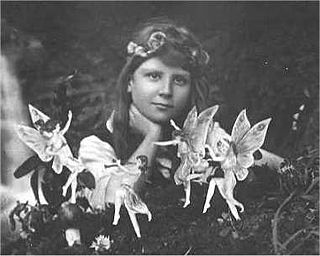
The Cottingley Fairies appear in a series of five photographs taken by Elsie Wright (1901–1988) and Frances Griffiths (1907–1986), two young cousins who lived in Cottingley, near Bradford in England. In 1917, when the first two photographs were taken, Elsie was 16 years old and Frances was 9. The pictures came to the attention of writer Sir Arthur Conan Doyle, who used them to illustrate an article on fairies he had been commissioned to write for the Christmas 1920 edition of The Strand Magazine. Doyle, as a spiritualist, was enthusiastic about the photographs, and interpreted them as clear and visible evidence of psychic phenomena. Public reaction was mixed; some accepted the images as genuine, others believed that they had been faked.
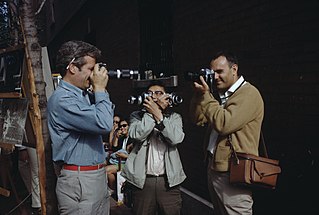
Photography is the art, application, and practice of creating images by recording light, either electronically by means of an image sensor, or chemically by means of a light-sensitive material such as photographic film. It is employed in many fields of science, manufacturing, and business, as well as its more direct uses for art, film and video production, recreational purposes, hobby, and mass communication.

A photographer is a person who makes photographs.

Photojournalism is journalism that uses images to tell a news story. It usually only refers to still images, but can also refer to video used in broadcast journalism. Photojournalism is distinguished from other close branches of photography by having a rigid ethical framework which demands an honest but impartial approach that tells a story in strictly journalistic terms. Photojournalists contribute to the news media, and help communities connect with one other. They must be well-informed and knowledgeable, and are able to deliver news in a creative manner that is both informative and entertaining.
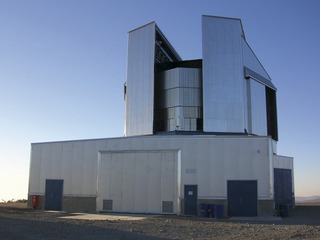
The VISTA is a wide-field reflecting telescope with a 4.1 metre mirror, located at the Paranal Observatory in Chile. It is operated by the European Southern Observatory and started science operations in December 2009. VISTA was conceived and developed by a consortium of universities in the United Kingdom led by Queen Mary University of London and became an in-kind contribution to ESO as part of the UK's accession agreement, with the subscription paid by the UK Science and Technology Facilities Council (STFC).

The "tourist guy" was an internet phenomenon that featured a photograph of a tourist on the observation deck of the World Trade Center digitally altered to show a plane about to hit the tower in the background during the September 11 attacks. The photo went viral as many manipulated pictures spread online. The man in the photograph was identified as Hungarian Péter Guzli, who took the photo in 1997. Guzli said he edited the photo as a joke for his friends and did not realize it would spread across the Internet.

Arctic Monkeys are an English rock band formed in Sheffield in 2002. The group consists of Alex Turner, Jamie Cook, Nick O'Malley, and Matt Helders. Former band member Andy Nicholson left the band in 2006 shortly after their debut album was released.
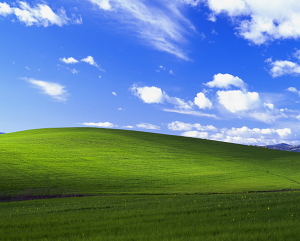
Bliss, originally titled Bucolic Green Hills, is the default computer wallpaper of Microsoft's Windows XP operating system. It is a virtually unedited photograph of a green hill and blue sky with white clouds in the Los Carneros American Viticultural Area of California's Wine Country. Charles O'Rear took the photo in January 1996 and Microsoft bought the rights in 2000. It is estimated that billions of people have seen the picture, possibly making it the most viewed photograph in history.

Longleat Safari and Adventure Park in Wiltshire, England, was opened in 1966 as the world's first drive-through safari park outside Africa.

Spirit photography is a type of photography whose primary goal is to capture images of ghosts and other spiritual entities, especially in ghost hunting. It dates back to the late 19th century. The end of the American Civil War and the mid-19th Century Spiritualism movement contributed greatly to the popularity of spirit photography. Photographers such as William Mumler and William Hope ran thriving businesses taking photos of people with their supposed dead relatives. Both were shown to be frauds, but "true believers", such as Sir Arthur Conan Doyle, refused to accept the evidence as proof of a hoax.

Meerkat Manor is a British television programme produced by Oxford Scientific Films that premiered in September 2005. Originally broadcast on Animal Planet International for four seasons, until its cancellation in August 2008, the programme had a revival in 2021 with the programme now known as Meerkat Manor: Rise of the Dynasty in some countries. Using traditional animal documentary style footage along with narration, the series told the story of the Whiskers, one of more than a dozen families of meerkats in the Kalahari Desert being studied as part of the Kalahari Meerkat Project, a long-term field study into the ecological causes and evolutionary consequences of the cooperative nature of meerkats. The original programme was narrated by Bill Nighy, with the narration redubbed by Mike Goldman for the Australian airings and Sean Astin for the American broadcasts. The fourth series, subtitled The Next Generation, saw Stockard Channing replacing Astin as the narrator in the American dubbing. In 2021, Nighy could be heard narrating the new series of Meerkat Manor when it was broadcast in the United States on BBC America and on Channel 5 in the United Kingdom, making it the first time that both television markets have used the same voice over on the programme.
The 2006 Lebanon War photographs controversies refers to instances of photojournalism from the 2006 Lebanon War that misrepresented scenes of death and destruction in Lebanon caused by Israeli air attacks.
Maciej Dakowicz is a Polish street photographer, photojournalist and gallerist. He is from Białystok in North East Poland. Dakowicz is best known for his series of photographs of Cardiff night-life titled Cardiff after Dark. He and others set up and ran Third Floor Gallery in Cardiff and he was a member of the In-Public street photography collective.
Geoffrey Crawley was a photographic expert and journalist, and was the editor in chief of British Journal of Photography for two decades. He was noted for exposing the photographs of the Cottingley Fairies taken in the early 20th century as a hoax.
Anthony Gordon Boxall, FRPS was a British amateur photographer, known for his portrayal of Gypsy life in Britain in the early 1960s.
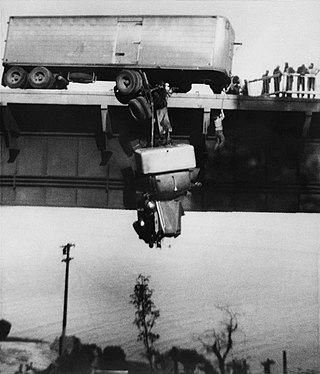
Virginia Margaret (Brown) Schau was an American who was the first woman and second amateur to win the Pulitzer Prize for Photography, which she was awarded in 1954. The award-winning photograph was taken in Redding, California, at the Pit River Bridge and was titled "Rescue on Pit River Bridge". The photograph was taken with a Kodak Brownie camera.

Calumet Photographic, Inc., often shortened to Calumet Photo and formerly known as Calumet Manufacturing Company, is a photographic retail and photofinishing specialty store, originally headquartered in Chicago, Illinois. In 2012, the company owned and operated a chain of 32 locations worldwide. The company had 15 locations in the United States, 8 in the United Kingdom, 6 in Germany, 2 in the Netherlands and 1 in Belgium, with 200 employees and an annual revenue of $10 million.

A selfie is a self-portrait photograph, typically taken with a digital camera or smartphone, which may be held in the hand or supported by a selfie stick. Selfies are often shared on social media, via social networking services such as Facebook, Instagram, Threads, Twitter, and Snapchat.
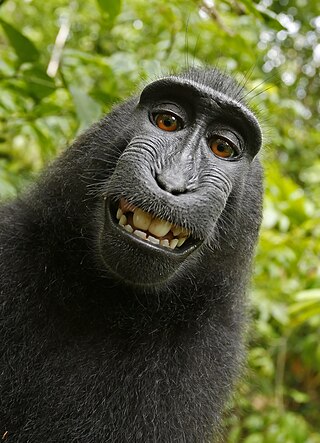
Between 2011 and 2018, a series of disputes took place about the copyright status of selfies taken by Celebes crested macaques using equipment belonging to the British wildlife photographer David J. Slater. The disputes involved Wikimedia Commons and the blog Techdirt, which have hosted the images following their publication in newspapers in July 2011 over Slater's objections that he holds the copyright, and People for the Ethical Treatment of Animals (PETA), who have argued that the copyright should be assigned to the macaque.
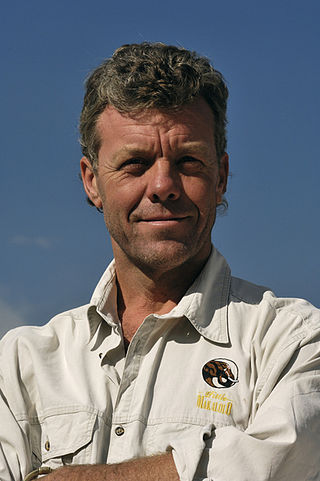
Pete Oxford is a British-born conservation photographer based in Quito, Ecuador. Originally trained as a marine biologist, he and his wife, South African-born Reneé Bish, now work as a professional photographic team focusing primarily on wildlife and indigenous cultures.
References
- 1 2 3 Roy Greenslade (7 September 2007). "Exposed: meerkat pictures were 'a slight hoax'". The Guardian. UK. Retrieved 7 September 2007.
- 1 2 3 4 5 6 7 Simon de Bruxelles (6 September 2007). "That's what you call wildlife photography". The Times. UK. Retrieved 11 February 2011.
- ↑ Patrick Barkham (7 September 2007). "The human zoo". The Guardian. UK. Retrieved 7 September 2007.
- 1 2 3 4 Matthew Moore and agencies (5 Sep 2007). "Longleat Meerkats take photos of themselves". The Daily Telegraph. UK. Retrieved 11 February 2011.
- ↑ Richard Smith (6 September 2007). "Monty the Meerkat's photo album". Daily Mirror. UK.
- ↑ "Monty the Meerkat took wildlife snaps using an EOS 650, reports UK press". Amateur Photographer. 6 September 2007. Archived from the original on 23 July 2011. Retrieved 11 February 2011.
- 1 2 Chris Cheesman (6 September 2007). "Exposed: Meerkat photo story was a 'hoax'". Amateur Photographer. Archived from the original on 23 July 2011. Retrieved 11 February 2011.
- ↑ Ian Jones (6 September 2007). "The meerkat that 'took photos'". MSN. Archived from the original on 14 July 2011. Retrieved 6 March 2011.